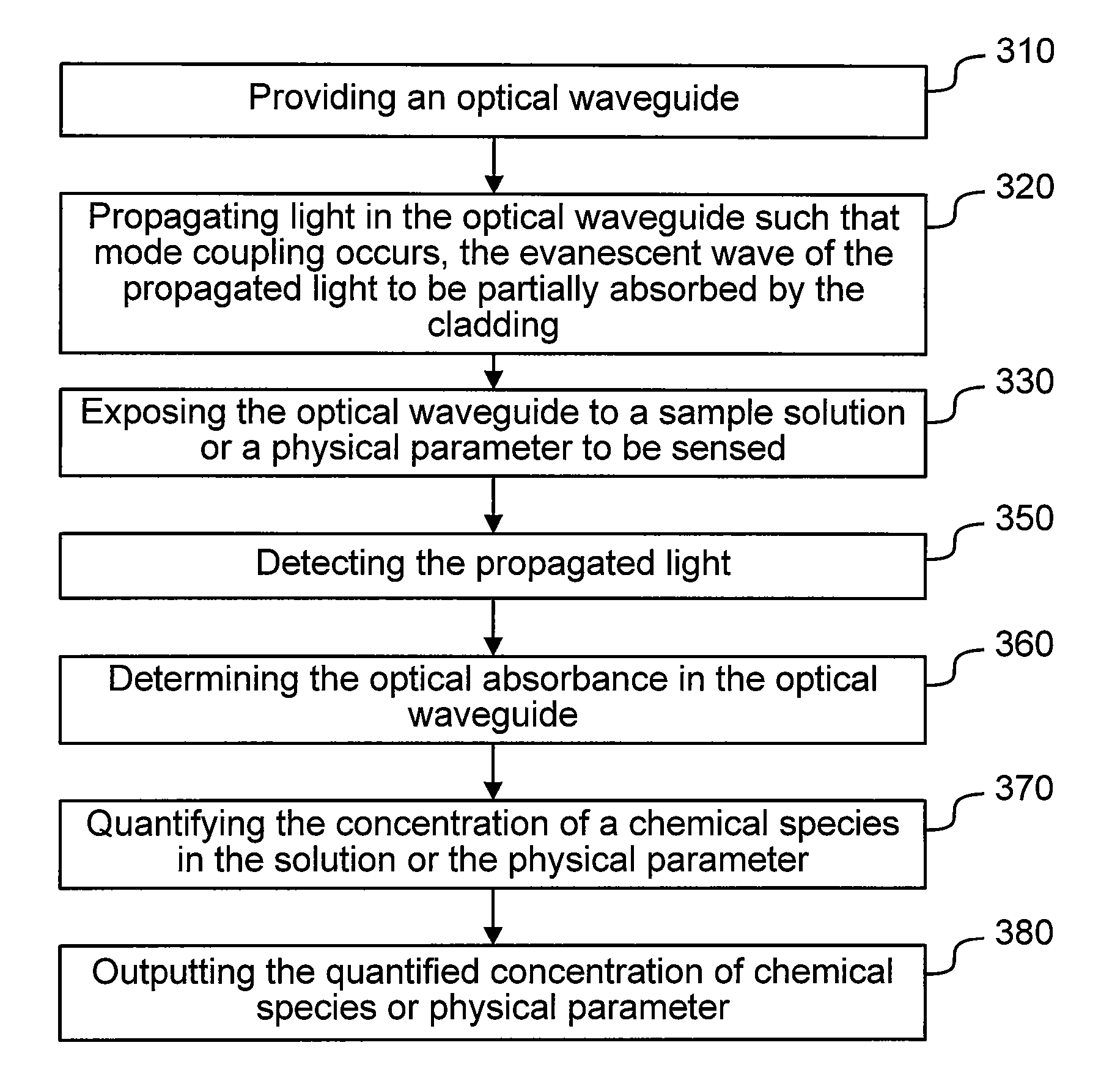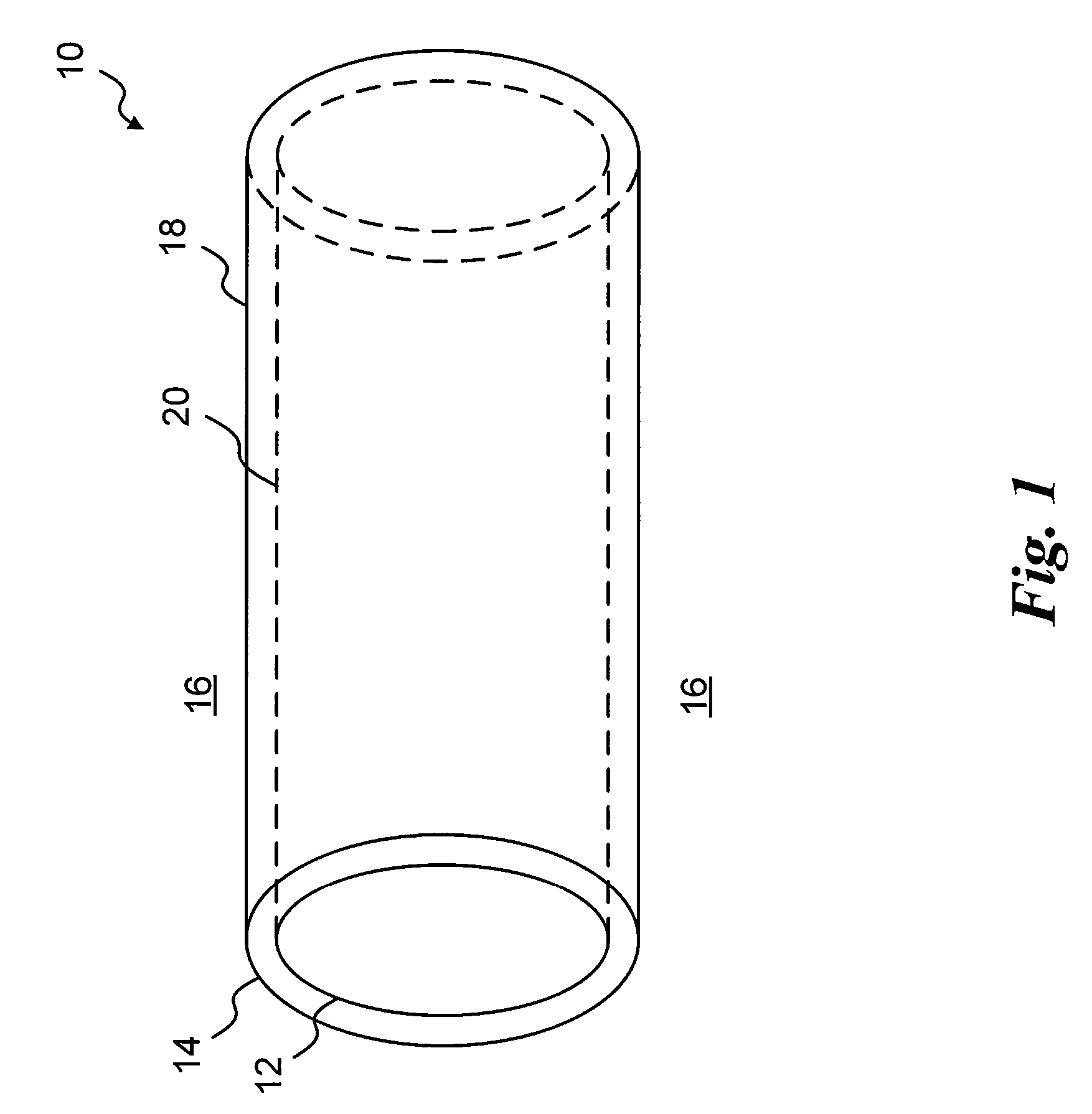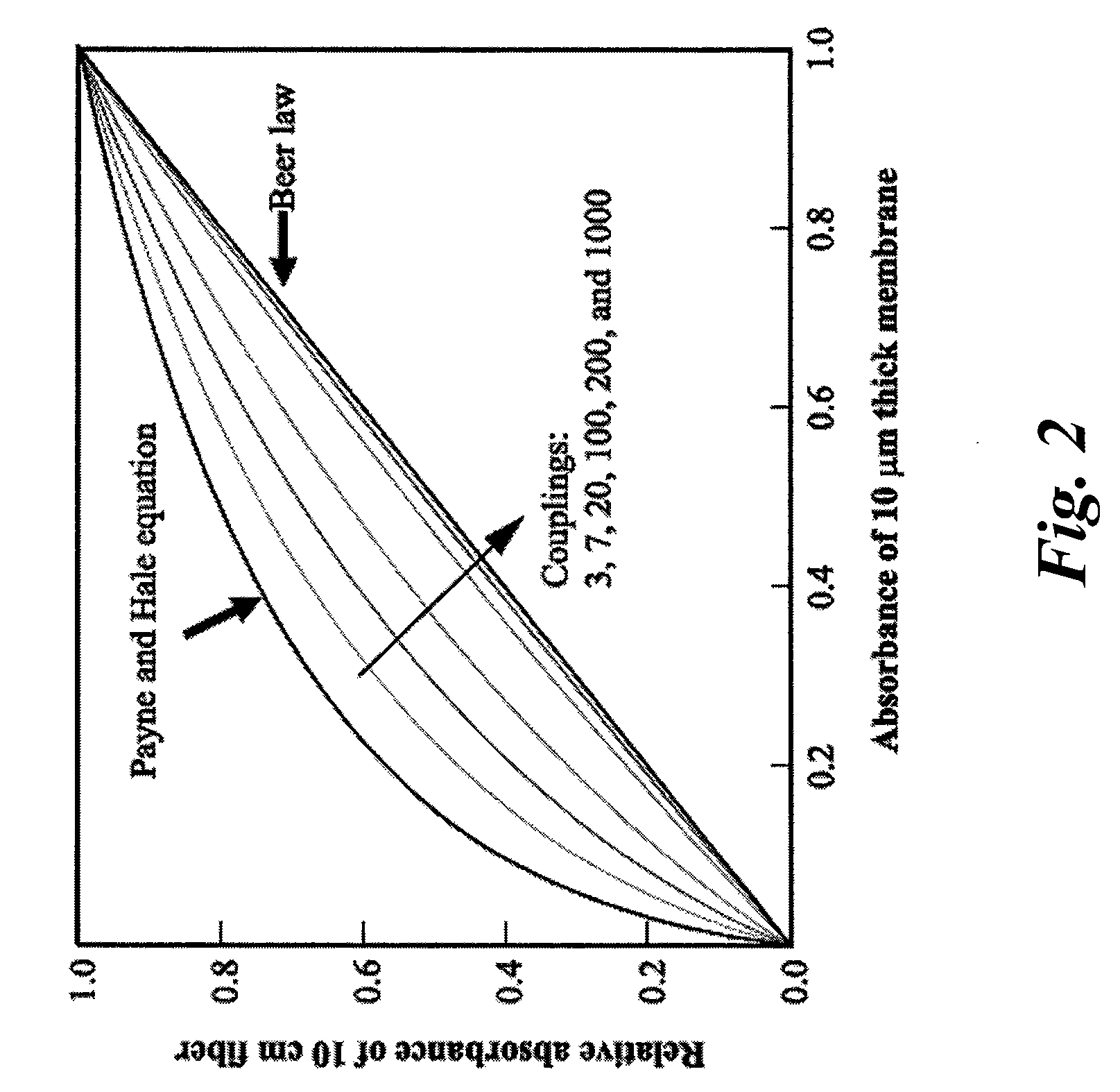Evanescent wave multimode optical waveguide and sensor with high mode coupling
a multi-mode optical waveguide and high-mode coupling technology, applied in the field of chemical sensors, can solve the problems of difficult and reliable quantification of the concentration of absorbent species, and achieve the effect of less sensitive to vibration, movement and bending
- Summary
- Abstract
- Description
- Claims
- Application Information
AI Technical Summary
Benefits of technology
Problems solved by technology
Method used
Image
Examples
example 1
RING BY PREFORM DRAWING
[0060]In one embodiment, the core of the preform is made from a commercial rod of Plexiglas® having a diameter of 11 mm with a refractive index n20D of 1.491 and a glass transition temperature Tg of about 108-109° C. The preform is prepared by multiple constant-speed immersions of the Plexiglas® rod into a solution of the selected cladding material compound until the desired layer thickness is reached on the perform. In this case, the cladding matrix is made of a copolymer poly(methyl methacrylate-co-decyl methacrylate) (pMMA-DMA) (n20D=1.476) synthesized in benzene. The pMMA-DMA-based cladding cocktail also comprises chromoionophore ETH 5294, anionic sites tetrakis[3,5-bis(trifluoromethyl)phenyl]borate sodium (NaTFPB), and potassium-selective ionophore valinomycin using tetrahydrofuran as the solvent. Fiber drawing is performed at a furnace temperature of 200° C. In those conditions, preform temperature does not exceed 180° C. but maintains this temperature f...
example 2
[0061]FIG. 3 shows experimental optical absorption spectra illustrating the sensitivity of an optical fiber having a Ca2+-selective nBA-MMA cladding painted on a bare PMMA fiber core. The different curves show the optical spectra of the fiber obtained when immersed in solutions of various concentrations of CaCl2. The spectra are baseline-corrected and normalized to the isobestic wavelength of 571 μm. FIG. 4 shows the calibration curve of the Ca2+-selective optical fiber and FIG. 5 shows the time response of the Ca2+ selective optical fiber.
[0062]The Ca2+-selective optical fiber under test is made from a Plexiglas® fiber core drawn, using drawing techniques known in the art, from a 10 cm Plexiglas® (PMMA) rod having a 10 mm diameter. A 400 μm optical fiber core is obtained. A 10 cm-long section of optical fiber core is then coated by painting a solution of the polymeric cladding mixture dissolved in tetrahydrofuran to provide the sensing cladding. A dried coating of approximately 4 μ...
PUM
| Property | Measurement | Unit |
|---|---|---|
| mode coupling length | aaaaa | aaaaa |
| refractive indices | aaaaa | aaaaa |
| refractive index | aaaaa | aaaaa |
Abstract
Description
Claims
Application Information
 Login to View More
Login to View More - R&D
- Intellectual Property
- Life Sciences
- Materials
- Tech Scout
- Unparalleled Data Quality
- Higher Quality Content
- 60% Fewer Hallucinations
Browse by: Latest US Patents, China's latest patents, Technical Efficacy Thesaurus, Application Domain, Technology Topic, Popular Technical Reports.
© 2025 PatSnap. All rights reserved.Legal|Privacy policy|Modern Slavery Act Transparency Statement|Sitemap|About US| Contact US: help@patsnap.com



